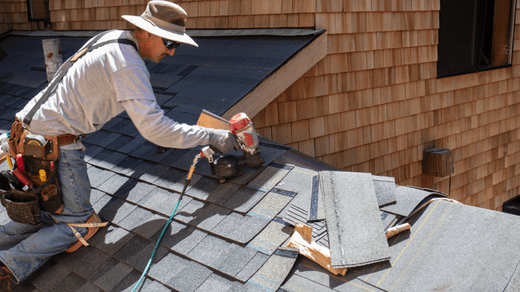Roof insulation is an essential component of your home’s energy efficiency and comfort. Over time, however, insulation can deteriorate, become less effective, or become outdated. Knowing when it’s time to upgrade your roof insulation is crucial to maintain a well-insulated home and maximize energy savings. In this informative article, we will explore the signs that indicate it’s time to upgrade your roof insulation.
1. Rising Energy Bills
One of the first signs that your roof insulation may need an upgrade is a noticeable increase in your energy bills. If your heating or cooling costs have been steadily rising despite consistent usage patterns, it could be a sign that your insulation is no longer performing optimally. Inadequate insulation allows heat to escape during the winter or enter during the summer, leading to increased energy consumption and higher utility bills.
2. Uneven Temperature Distribution
If you notice significant temperature variations within different areas of your home, it could be an indication of insufficient or deteriorating insulation. Certain rooms may feel warmer or cooler than others, even when the HVAC system is running consistently. Inadequate insulation allows heat transfer through the roof, resulting in uneven temperature distribution and discomfort.
3. Cold or Drafty Areas
Feeling drafts or experiencing cold spots in certain areas of your home, especially near windows or walls, suggests that your insulation may be compromised. Cold air entering through gaps in the roof can cause localized cooling, making specific areas uncomfortable and challenging to regulate temperature-wise. Upgrading your roof insulation can help eliminate drafts and create a more consistent and comfortable indoor environment.
4. Visible Signs of Water Damage
Water damage is a serious concern that can compromise both the integrity of your roof and the effectiveness of your insulation. If you notice water stains on your ceiling or walls, peeling paint, or mold growth, it may be a sign that your roof insulation has been compromised by leaks or excessive moisture. Addressing these issues promptly, along with upgrading your insulation, is essential to prevent further damage and maintain a healthy living environment.
5. Age of Existing Insulation
The age of your existing insulation is an important factor to consider when assessing whether an upgrade is needed. Insulation materials deteriorate over time, losing their effectiveness and thermal resistance. If your insulation is over 15 to 20 years old, it may be time to consider upgrading to newer, more efficient insulation materials that meet current industry standards.
6. Pest Infestation or Damage
Pests such as rodents or insects can damage insulation, compromising its performance. If you’ve experienced pest infestation or notice signs of damage to your insulation, it’s essential to address the issue promptly. Upgrading your insulation and implementing pest control measures can help prevent further damage and maintain a hygienic and well-insulated home.
7. Renovations or Remodeling Projects
If you’re planning renovations or remodeling projects that involve your roof or attic space, it presents an excellent opportunity to upgrade your insulation. Upgrading to newer insulation materials and ensuring proper installation during these projects can significantly improve energy efficiency and comfort in your home.
8. Outdated Insulation Materials
Advancements in insulation technology have led to the development of more efficient and environmentally-friendly materials. If your current insulation uses outdated materials, such as fiberglass batts or outdated foam products, upgrading to modern insulation options can provide significant benefits. Newer materials, such as spray foam insulation or blown-in cellulose, offer higher R-values and better thermal performance.
9. Noise Reduction
If you’re experiencing excessive noise from outside sources, such as traffic or neighbors, it may indicate that your insulation is inadequate in soundproofing. Upgrading your roof insulation can help reduce noise transmission and create a quieter and more peaceful indoor environment.
Conclusion
Upgrading your roof insulation is essential to maintain energy efficiency, comfort, and a healthy living environment in your home. If you’re experiencing rising energy bills, uneven temperature distribution, cold or drafty areas, visible signs of water damage, or your insulation is outdated, it may be time to consider upgrading. Consult with a professional roofing contractor or insulation specialist to assess your insulation needs and recommend the most suitable insulation options for your home.
By staying vigilant and upgrading your roof insulation when necessary, you can ensure optimal energy efficiency, enhance comfort, and enjoy the benefits of a well-insulated home.




